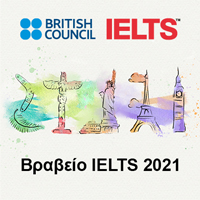Business Process Intelligence
Objectives:
The course has a three objectives:
a) to familiarize the students with concepts related to Business Process Management (modelling, analysis, redesign/re-engineering)
b) to provide in-depth training in computational methods and algorithms (process mining, genetic algorithms, heuristics, other optimization methods), and
c) to combine the above in order to produce optimal and adaptive business process models.
Skills:
By successful completion of the course, the students will:
- have a solid understanding of the various stages of Business Process Management,
- be able to identify, document and break-down the core business processes of an organization or enterprise,
- employ a series of business process modelling techniques (e.g. EPC, IDEF, BPMN) along with business process analysis and optimisation methods.
- be familiar with techniques such as: process mining, simulation, machine learning, genetic algorithms, natural language processing.
- be able to combine BPM approaches and computational methods in order to achieve quantifiable and optimal results for the organization.
Prerequisites:
there are no prerequisites for this course
Content:
Business process management is usually treated from two different perspectives: business administration and computer science (Weske, 2012). The life-cycle of a business process entails a series of stages: identification, modelling, analysis, optimisation, re-design/re-engineering and automation (Dumas et al., 2013).
The course focuses on initial identification and modelling of a business process utilizing formal modelling techniques and also in optimisation / re-design employing quantifiable criteria and optimisation algorithms. The course main areas of focus are: business process modelling techniques and formal languages, re-design approaches and methodologies utilizing techniques such as process mining, simulation, machine learning, genetic algorithms, natural language processing.
Textbooks:
1. Linden, M., Felder, C. and Chamoni P. (2011), Dimensions of Business Process Intelligence, Springer.
2. Weske, M. (2012), Business Process Management: Concepts, Languages, Architectures, Springer (2nd edition), New York.
3. Dumas, M., La Rosa, M., Mendling, J., Reijers, H.A. (2013), Fundamentals of Business Process Management, Springer, London.
4. Cummings, F. (2002), Enterprise Integration: An Architecture for Enterprise Application and Systems Integration, John Wiley & Sons, Toronto.
Assessment:
- 20% weekly exercises (10)
- 30% project
- 50% exams










